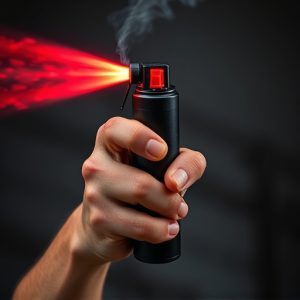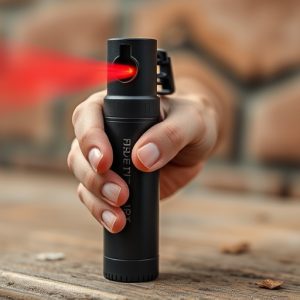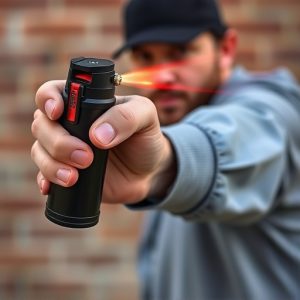Riot Control Agents: Legal, Tactical, and Safe Deployment Strategies
Riot control agents like chloroacetanilide (CN), oleoresin capsicum (OC), and pepper spray are desig…….
Riot control agents like chloroacetanilide (CN), oleoresin capsicum (OC), and pepper spray are designed to temporarily incapacitate individuals in civil unrest, targeting their senses. The "Spray and Move" deployment strategy involves officers dispersing agents while retreating or advancing, disrupting crowd formation and minimizing severe injuries. Legal frameworks govern the use of these agents, with each jurisdiction having its own laws and regulations, balancing public order and individual rights. Effective deployment requires strategic positioning, proper training, clear decontamination protocols, medical support, and protective gear to ensure safety and effectiveness. Global legal frameworks for riot control agents vary widely, from stringent restrictions to wider discretion, emphasizing the need for international collaborations like Spray and Move Deployment Techniques to balance public safety and civil liberties.
Riot control agents (RCAs), a powerful tool in law enforcement, have evolved from traditional tear gas to sophisticated chemical compounds. This article delves into the strategic deployment of RCAs, exploring their chemical composition, effects, and the critical ‘spray and move’ tactic. We examine the legal framework governing their use globally, best practices for safe deployment, and international perspectives, including case studies, offering a comprehensive guide to understanding and navigating the complex world of riot control agent law enforcement, with a focus on the effective Spray and Move Deployment Techniques.
- Understanding Riot Control Agents: Chemical Composition and Effects
- Spray and Move Deployment Strategy: Principles and Tactical Application
- Legal Framework Governing Law Enforcement Use of Riot Control Agents
- Best Practices for Safe and Effective Riot Control Agent Deployment
- International Perspectives: Comparisons and Case Studies of Riot Control Agent Laws
Understanding Riot Control Agents: Chemical Composition and Effects
Riot control agents, also known as chemical agents or less-lethal weapons, are designed to disrupt and disperse large groups of individuals involved in civil unrest or violent gatherings. These agents operate by targeting the senses, specifically the eyes, nose, throat, and skin, causing discomfort, irritation, and temporary incapacitation. Understanding their chemical composition is key to effective deployment.
Commonly used riot control agents include chloroacetanilide (CN), oleoresin capsicum (OC), and pepper spray. CN gas, for instance, creates a burning sensation in the eyes and respiratory system, while OC causes skin irritation and tears due to its capsaicin content. Spray and move deployment techniques involve strategically applying these agents from a safe distance to control crowds without causing permanent harm. Proper training is essential for law enforcement officers to ensure they use these powerful tools responsibly and proportionately.
Spray and Move Deployment Strategy: Principles and Tactical Application
The “Spray and Move” deployment strategy is a tactical approach used by law enforcement agencies for riot control, designed to efficiently manage and disperse crowds. This technique involves officers deploying riot control agents, such as pepper spray or tear gas, into the crowd while simultaneously retreating or moving forward strategically. The key principles behind this method are to create distance between the officers and the crowd, disrupt crowd formation, and facilitate better control without direct physical confrontation.
Tactically, officers form a line or a perimeter, with each officer carrying specialized equipment for dispensing riot control agents. Upon command, they spray the agents into the crowd, focusing on facial areas to maximize irritation and disorientation. This action is swiftly followed by a quick retreat or advance, allowing the agents to take effect while maintaining officer safety. The strategy aims to control the crowd’s behavior without causing severe injury, ensuring swift resolution of potential riots or large gatherings.
Legal Framework Governing Law Enforcement Use of Riot Control Agents
The legal framework governing law enforcement’s use of riot control agents, often referred to as “spray and move” deployment techniques, is a critical aspect of maintaining public safety during civil disturbances or large-scale gatherings. Each jurisdiction has its own set of laws and regulations that dictate when and how these agents can be employed, with the primary goal of balancing public order and individual rights. These rules ensure that law enforcement agencies use such measures as a last resort, only when necessary to control rioting or violent crowds.
Internationally, guidelines like those set by the United Nations offer standards for responsible policing, including the use of force and crowd control tactics. Within national boundaries, legislative acts provide specific direction on the types of agents permitted, their concentration levels, and the training required for officers to deploy them safely and effectively. Understanding this legal framework is essential for law enforcement agencies to ensure compliance and maintain public trust during high-pressure situations.
Best Practices for Safe and Effective Riot Control Agent Deployment
When deploying riot control agents, such as pepper spray or tear gas, law enforcement agencies must prioritize safety and effectiveness to minimize harm and maintain public order. Best practices for spray and move deployment techniques involve careful planning and strategic positioning. Officers should be trained in proper usage, ensuring a safe distance from the target crowd and aiming for low-hanging vents or openings to disperse agents effectively.
Regular drills and simulations help officers refine their skills, improve communication, and adapt to dynamic situations. Additionally, agencies should establish clear protocols for decontamination areas, ensure access to medical support, and equip officers with protective gear. By adhering to these practices, law enforcement can balance the need for crowd control with the safety of both the public and the officers themselves.
International Perspectives: Comparisons and Case Studies of Riot Control Agent Laws
Riot control agents (RCAs) are subject to varying legal frameworks globally, reflecting diverse societal values and historical contexts. International perspectives offer valuable insights into the effective regulation of RCAs, with several countries adopting unique approaches based on their specific needs. For instance, some nations have stringent laws restricting the use of RCAs to life-threatening situations, focusing on minimal force principles. These jurisdictions often emphasize the importance of de-escalation tactics and non-lethal alternatives before deploying chemical agents. In contrast, other countries allow for wider discretion in using RCAs, particularly during mass gatherings or civil unrest, with a focus on public safety and order maintenance.
Case studies from around the world reveal varying degrees of regulation and oversight. Some nations have well-defined protocols for RCA deployment, including specific training requirements for officers and clear guidelines on when and how to use these agents. Countries like Germany and South Africa have implemented stringent regulations, incorporating rigorous testing and accountability measures. Conversely, other regions face challenges due to inadequate legislation or inconsistent enforcement. These variations highlight the need for a balanced approach that ensures public safety while respecting civil liberties, with best practices emerging from international collaborations and sharing of successful strategies, including Spray and Move Deployment Techniques.
Riot control agents, while powerful tools for law enforcement, require careful consideration and responsible deployment. The article has explored essential aspects, from understanding chemical compositions to international legal perspectives, emphasizing the importance of strategic tactics like the Spray and Move method. Best practices highlight the need for safety, efficacy, and proportionality in their use. By examining global laws and case studies, it’s clear that a balanced approach, combining effective riot control with community engagement, is vital for maintaining public safety without excessive force.


